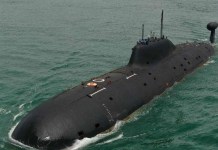- Rising Oil Prices in India – Delhi Warns OPEC Nations to Control Prices
- India Will Import US Crude Oil; Will Not Replace Iranian Oil Imports
There are three major factors that have played a key part in inflating the fuel prices in India. First, the prices of crude oil have gone up substantially over the last few months. Second, the value of the rupee as compared to the dollar is sliding every day. Third, the VAT imposed on petrol and diesel is ad valorem, which means that as prices go up, more tax is imposed.
Who Decides The Price of Petrol?
There are five factors decide the retail price of petrol or diesel. First, there’s the price at which oil marketing companies buy from the refinery. This depends mainly on the price of crude oil import and the value of the rupee against the USD.
Second, the freight charges for transporting the refined oil to petrol pumps. Oil Marketing Companies also add their margin to it and sell it to the dealers. Third, the fixed excise duty that the central government charges. The fourth factor is the dealer commission, and the fifth is the VAT which the states charge, which fluctuates from state to state.
Who Benefits?
About 50% of the money that you pay is for the price of the crude oil and its refining, and the other half is taxes and commissions. The major share goes to the central government as excise duty which is Rs 19.48 per litre as of now.
The second component is VAT, which varies from state to state. Many states charge taxes much higher than the central excise. The third component is the dealer’s commission.
For instance, out of the Rs 80.73 that a consumer would have paid for a litre of diesel in Bangalore- Rs 40.45 went to Indian Oil, Rs 19.48 went to the Modi government as excise duty, and Rs 17.16 went to the State government as VAT. The remaining — Rs 3.64 — will be the commission that the petrol pump dealer.
Which State Charges Maximum Tax?
Going by the retail prices in the state capitals (excluding Union Territories), Maharashtra (39.12%) charges maximum VAT on petrol. Madhya Pradesh (35.78% ) and Punjab (35.12%) are the second and third state, respectively.
Goa (16.66%) charges minimum VAT followed by Mizoram (18.88%) and Arunachal Pradesh (20.00%).
What Is the Cost Of Petrol Neighbouring Countries?
India at present is one the most expensive places to buy petrol. In neighbouring countries that share boundaries with India, Myanmar is the cheapest place to buy petrol. After factoring in the difference in the value of the currency, one litre of petrol will cost just Rs INR 41.99.
In other neighbouring countries, the cost of one litre of petrol in Indian rupees (INR) is Pakistan – Rs 54.33, Bhutan – Rs 63.71, Nepal – Rs 69.55, Sri Lanka – Rs 70.99, Bangladesh – Rs 76.06 and China – Rs 79.60.
Will the prices come down Under GST?
It is unlikely that petrol and diesel will come under GST any time soon. States are reluctant since the VAT on petrol and diesel is one of the biggest sources of their income. If petrol comes under GST even in the maximum slab of 28% and no additional cess is imposed on it, you will get a litre of petrol in Delhi for just about Rs 57.
Is Modi Government Under Pressure Due To Rising Oil Prices?
Certainly. The Modi government has reduced the oil prices by marginal INR 2.50, but skyrocketing oil prices and a falling dollar would be a major concern for the central government. According to experts, it is doubtful that the oil prices in India will come down significantly in the near future. A volatile international crude oil market, US sanctions on Iran and a shaky rupee indicate that petrol is going to be on fire for some time.
More News at EurAsian Times
- Is PM Modi Planning to Divide J&K into 3 Parts Before 2019 Elections?
- India Using Israel’s “Palestine Strategy” To Crush Rebellion in Kashmir?
- Saudi Money, US Weapons, Israeli Intelligence Fuelling Arab NATO – Iran
- Indian Army Knows The Exact Location of 12 Terror Launch Pads in Pakistan; But Can They Strike?




